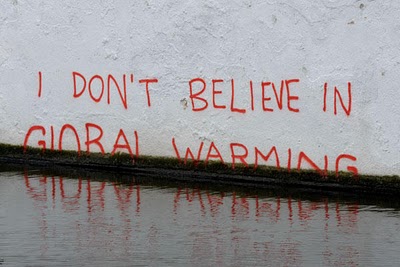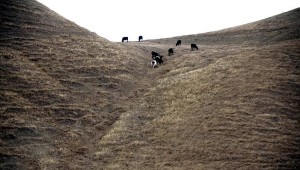The worst drought in 70 years of records has renewed the focus in the media over whether these conditions might be related to climate change. At an estimated cost of $2 billion to the economy, the implications of the drought are huge for an industry which forms one of the primary sectors of our exports. While Joyce and English have light-footed around the issue, the Greens have argued that the National Party are not taking climate change seriously enough at detriment to our farmers. English fueled the Greens’ argument through his statement in the House last week that similar arguments on climate change had been made in Australia, and it had not stopped raining for the last five years. Unfortunately for English, he had overlooked the fact that Australia has been in drought for the last four years. Grilled by Corin Dann on Q+A on this gaffe, English produced some deft political sound bite maneuvering to shift his answer from focusing on climate change to focusing on the $500 million dedicated towards cleaning up waterways. While cleaning up waterways is great news, the Ministry for the Environment has predicted in their modelling that droughts are going to be more frequent, signalling that it is in New Zealand’s interest to think about the ongoing impact of climate change. Yet listening to the National Party leadership, climate change is often positioned as something that only environmentalists worry about.
While this article in the National Business Review somehow interpreted English not answering on climate change as leading on climate change, the issue of climate change is far less contentious than how it is often presented in the media. With 97% of publishing, peer-reviewed scientists agreeing that climate change is due to human activity (source: NASA), the arguments against it are often based on myth. It is not unusual to hear such myths bandied around as the temperature has not risen for the last 17 years, and the notion that because some parts of the world are cooling global warming is dismissed as an overall trend. Such myths propagate from the way that science is always interpreted through the lens of the social, an area that has received much more attention in literature since Bruno Latour and Thomas Kuhn paved the way for frameworks that examine how the reception of science is often based less on fact and more around the way that it taps or butts against notions of social consensus. Climate change and how we deal with it has also been influenced by the demands of industry, which has been based on the previous paradigm of exploiting resources, making it a touchy issue where legislation (such as carbon taxes) impact on the bottom line. This, together with confusion over the journalistic values of balance (which sees the skeptic side elevated despite broader scientific consensus) has clouded the issue. Moreover, climate change as an issue that requires nation state cooperation often butts against the internal interests of the nation state in requiring a much more global cooperation that transcends geopolitical factions.
Yet if it is not taken seriously in New Zealand, and often paraded as myth in the US media, there are indications that the defense industries are taking the IPCC’s predictions with much more weight. James Clapper is the current Director of National Intelligence and most senior security advisor to President Obama, overseeing 16 intelligence agencies. In the 2013 World Threat Assessment Report, Clapper trots out the usual geopolitical threats to US interests while highlighting the impact that climate change will have on migration and conflict. Clapper’s views reiterate that of the US Commander of the Pacific Navy, Navy Admiral Samuel J. Locklear III, who states that climate change is the biggest threat facing the Pacific. This threat, he argues, has led the US Navy to look at scenarios where they may have to work with China and India to manage the effects of climate change on populations. This news will not come as any surprise to anyone who follows US military policy. Since 2010, the Pentagon has had much more emphasis on the role of climate change and the pressure it places on resources to exacerbate conflicts. The Pentagon estimated in 2010 that more than 30 US military bases are at risk from sea levels rising and the instability caused by climate change led weather effects. In 2008, the Center for a New American Security conducted climate war games set in the year 2015 with 45 scientists and national security analysts from Asia, South Asia, Europe and America in an attempt to see how nations might collaborate to deal with escalating conflicts from climate change effects.
The focus from the US military should signal to the New Zealand government that while climate change threats are often taken as marginal by the media and the public, the science is entering the mainstream. This should not be taken as the need to secure ourselves against our Pacific neighbours – as this article from the AUT Pacific Media Centre shows, the Pacific Islands that surround us want to hold onto their sovereign nations and waters rather than migrating. However, in the context of looking at the ongoing impact of a greater frequency of drought, the notion of climate change needs to move to the centre of our discussions rather than remaining at the periphery.







Federated Farmers seems to have an ambivalent attitude to climate change based on the article you can read at Hot Topic
http://hot-topic.co.nz/why-is-federated-farmers-promoting-climate-denial-during-a-major-drought/
Every time I hear some climate denial waffle, I mentally retort “…and yet it moves.”
What a load of rubbish.
CO2 in the atmosphere is 0.003%. That is 3/100ths of 1% of the atmosphere.
Any increase -at all- from a base of 3/100ths of 1% can be negated by planting trees. It’s that simple!
And the worlds poulation based upon current demographics – will increase- but by 2080 -less than 70yrs- will return back to what the population NOW is!
Chimney sweeps as a political force should be relegated to the dustbin of history! 😎
Thanks Harriet. I take that you are willing to indemnify the governments and people of the world against the possibility that you might be wrong, and the vast majority of scientists (and the US military) right?
Meanwhile, the rational people on the planet, who know that a change of CO2 in the atmosphere from 0.002% to 0.003% is enough to kick us out if an ice age, will get with trying to do something about the problem.
Atmospheric CO2 February 2013: (co2now.org)
396.80 ppm (396.8 parts per million by volume) =
0.00039680 = 0.039680% (by volume)
Upper safety limit for atmospheric CO2: 350 ppm (exceeded since 1988)
Average 1959: 315.97 ppm
Growing deforestation for farmland and increased agricultural production will unlikely result in more trees, not to mention the output of increased CO2.
Harriet
If I give you a litre of water with .003% of someone else’s urine in it or .003% mercury … would you drink it?
Over the past 400,000 (800,000?) years every time we’ve hit 315 ppm the planet has gone into a cooling phase, – then the CO2 has gone down and the environment warms up again, that is why in the 70s they were saying we were headed for an ice age, not factoring in the the amount of continued CO2 emissions, that have sent us up to 397ppm
Way way to much information here http://www.youtube.com/watch?v=XB3S0fnOr0M
And to feed the projected population out to 2050, ‘we’ will need to grow as much food as humans have produced in the past 10,000 years
Sorry A Mc 350ppm is 35ppm over anything humans can survive long term. According to Guy McPherson anyway.
Not wishing to defend them but –
Yet listening to the National Party leadership, climate change is often positioned as something that only environmentalists worry about.
Where have Labor got climate change and peak oil ? …. not even in the top 20?
And the Greens want QE and more manufacturing?
And they ALL promote a growth* based savings scam.
*environmental destruction.
The Pentagon estimated in 2010 that more than 30 US military bases are at risk from sea levels. –
Something like over 80% of our oil infrastructure is under a meter above sea level, pipes, pumps, storage …..
As the US navy uses mega tons of oil, not just in fueling their ships but in the manufacture of them, once the oil infrastructure is sunk the navy will be back to rowboats … I guess they are thinking along these lines. And what mitigating actions will the Indian Navy take when half of Bangladesh comes swimming ashore.
Its going exponential, I feel like the dinosaur watching a meteor shower.
For the record—I do not think that any sea ice will survive this summer.
An event unprecedented in human history is today, this very moment, transpiring in the Arctic Ocean.
http://www.elephantjournal.com/2013/03/breaking-arctic-ice-breaks-up-in-beaufort-sea-paul-beckwith/
The cracks in the sea ice that I reported on my Sierra Club Canada blog and elsewhere over the last several days have spread and at this moment the entire sea ice sheet (or about 99 percent of it) covering the Arctic Ocean is on the move. Clockwise. The ice is thin, and slushy, and breaking apart.
Sorry I should have put some quote marks in, as this is no way me;
>For the record—I do not think that any sea ice will survive this summer.
An event unprecedented in human history is today, this very moment, transpiring in the Arctic Ocean.
http://www.elephantjournal.com/2013/03/breaking-arctic-ice-breaks-up-in-beaufort-sea-paul-beckwith/
The cracks in the sea ice that I reported on my Sierra Club Canada blog and elsewhere over the last several days have spread and at this moment the entire sea ice sheet (or about 99 percent of it) covering the Arctic Ocean is on the move. Clockwise. The ice is thin, and slushy, and breaking apart.<
Yeah, right…
It’s just a shame that they cutting down the rain forests in Brazil and Indonesia – rainforests which were the plasnet’s natural carbon-sinks.
As for the population rising by 2080 – that’s a negative, Harriet. Best calculations point to the human population rising to 9 BILLION by 2050.
Imagine 9 billion mouths to feed, clothe, house… and their waste to get rid of. If you want a glimpse of that world, Harriet, grab a dvd called “Soylent Green”.
Based on a novel by Harry Harrison, it fore-saw over-population; the despoiling of the land; the collapse of global fish stocks; the One Percenters living in luxury whilst everyone else lived in filth… and climate change.
For a 40 year old movie, it was eerily prophetic.
The UNIPCC are WAY behind the times, and their projections are so far out of kilter with reality they are laughable.
Numerous positive feedbacks which self-reinforce and mutually reinforce have been triggered, and the acceleration of the meltdown process is non-linear. Nobody ‘in the know’ expects there to be ANY summer ice from 2017 onwards.
And the current CO2 level corresponds with a sea level about 23 metres higher than present (thermal lag accounts for it not being there yet).
Then there is the reduction in Global Dimming that accompanies the collapse of Industrial Civilisation (due to declining EROEI) to think about. Less Global Dimming = a surge in warming on top of existing positive feedbacks.
We are on track for a largely uninhabitable planet some time between 2040 and 2060 if we are lucky and before 20140 if we are not.
The CO2 level is over 40% above where it ‘should be’, and is rising at the greatest rate in all of geological history, more than 10 times the rate of the PETM.
Adapt to climate change? What a joke!
Comments are closed.